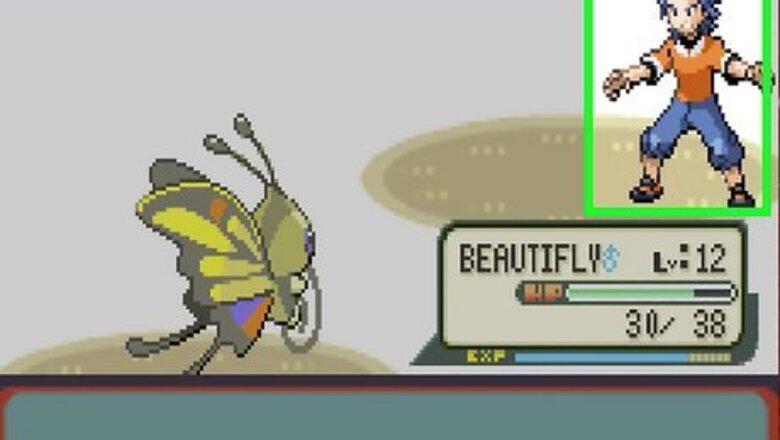
views
- Choose Pokémon Ruby or Sapphire for a classic adventure centered around the Legendary Pokémon Groudon or Kyogre, respectively.
- Pick Pokémon Emerald for an all-new storyline that features 3 Legendary Pokémon (Rayquaza in addition to Groudon and Kyogre) as well as some extra features.
Pokémon Ruby and Sapphire Key Features

Different versions of the same storylineIn both Pokémon Ruby and Sapphire, you play as the main character, whose goal is to defeat all 8 Gym Leaders, beat the Elite Four, and triumph over the current Pokémon Champion to become the new Champion. Along the way, you have run-ins with either Team Magma (Ruby) or Team Aqua (Sapphire), villainous organizations that are hoping to wake up a certain Legendary Pokémon (Groudon in Ruby, Kyogre in Sapphire).
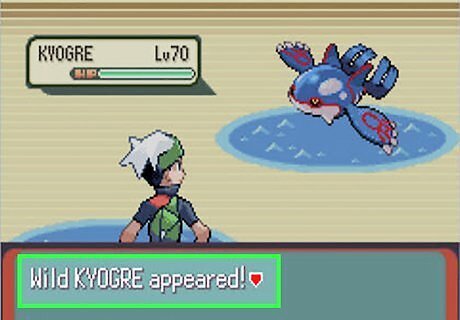
Different legendary Pokémon availabilityIn Pokémon Ruby, you can only catch Groudon, a Ground-type Legendary Pokémon that’s awoken by Team Magma. In Pokémon Sapphire, you can only catch Kyogre, a Water-type Legendary Pokémon that’s awoken by Team Aqua. Kyogre cannot be caught in Pokémon Ruby, while Groudon cannot be caught in Pokémon Sapphire. Besides either Kyogre or Groudon, the Legendary Pokémon Rayquaza, Regirock, Registeel, and Regice are available in both Pokémon Ruby and Sapphire. The Legendary Pokémon Latios is exclusive to Ruby, while Latias is exclusive to Sapphire.
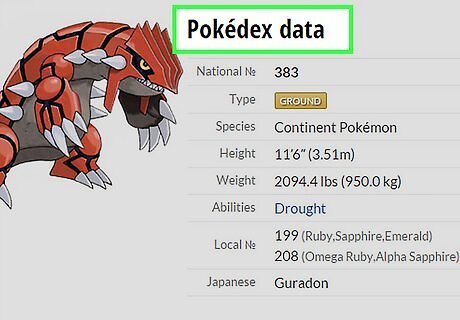
National Pokédex accessThere’s no way to get the National Pokédex in-game during Pokémon Ruby or Sapphire. If you trade with a Pokémon FireRed or LeafGreen game, however, your Pokédex automatically gets upgraded to National status.

Game-exclusive PokémonLike most Pokémon game series, both Ruby and Sapphire feature a few game-exclusive Pokémon that aren’t available in the other title. Here’s a quick run-down of what they are: Ruby-exclusive Pokémon: Seedot (Grass), Nuzleaf (Grass/Dark), Shiftry (Grass/Dark), Mawile (Steel), Zangoose (Normal), and Solrock (Rock/Psychic) Sapphire-exclusive Pokémon: Lotad (Water/Grass), Lombre (Water/Grass), Ludicolo (Water/Grass), Sableye (Dark/Ghost), Seviper (Poison), and Lunatone (Rock/Psychic)
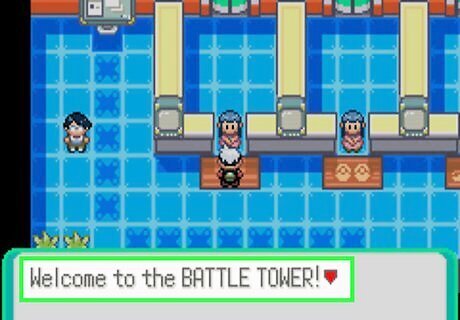
Battle Tower accessBoth Pokémon Ruby and Sapphire feature the Battle Tower, a special building below Route 130 that you can only get to by boat. In the Battle Tower, players can battle other CPUs in a continuous tournament and earn prizes (depending on how long your win streak is).
Pokémon Emerald Key Features
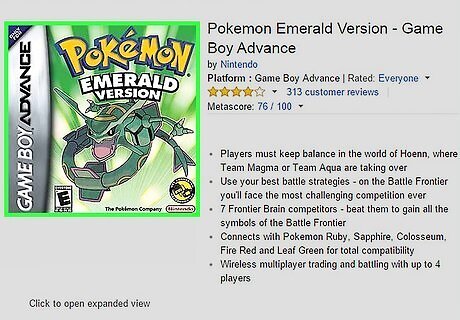
Unique storylineLike Ruby and Sapphire, your ultimate goal is to beat all 8 Gym Leaders, the Elite Four, and the Pokémon Champion. Unlike Ruby and Sapphire, however, Pokémon Emerald features both Team Magma and Team Aqua, who are each trying to awaken the Legendary Pokémon Groudon and Kyogre, respectively. After being awakened, Groudon and Kyogre start to battle—it’s up to you to find Legendary Pokémon Rayquaza, who can stop the fight.
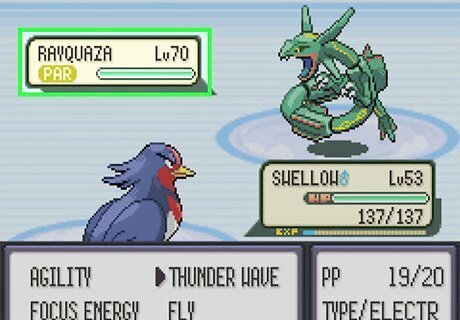
More legendary Pokémon availabilityIn Pokémon Emerald, players have the opportunity to catch Rayquaza, Kyogre, and Groudon, in addition to Regirock, Regice, Registeel, as well as Latios or Latias. Certain Legendaries, like the other Latias/Latios, Mew, Ho-Oh, Lugia, and Deoxys are only available with special event tickets/items (Mystic Ticket for Ho-Oh and Lugia, Old Sea Map for Mew, Aurora Ticket for Deoxys), which are no longer available. Some online sellers (on sites like eBay) offer to hack these tickets onto your device for a small fee (provided that you mail them your console).
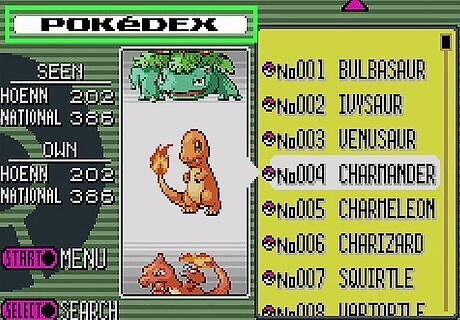
National Pokédex accessOnce you defeat the Pokémon Champion, leave your home in Littleroot Town, and go into the Hall of Fame, you’ll meet up with Professor Birch and your in-game rival. After returning to Birch’s lab, the Professor upgrades your Pokédex to National level—in other words, it catalogs all Gen 1 and 2 Pokémon (in addition to Gen 3). The main catch is that you have to trade with other Pokémon FireRed and LeafGreen users to get the other Gen 1 and Gen 2 Pokémon that aren’t already available in the game.
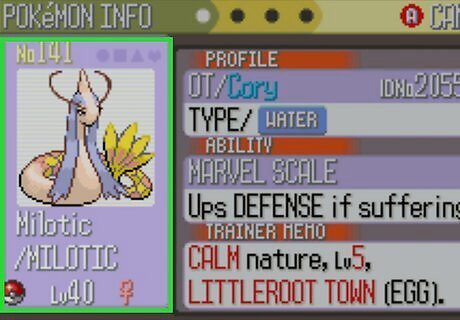
Different Pokémon availabilityCertain Pokémon aren’t available in Pokémon Emerald, including 50 Johto Pokémon and 149 Kanto Pokémon. Emerald specifically cuts a few Hoenn Pokémon from the roster, such as Surskit (Bug/Water), Masquerain (Bug/Flying), Meditite (Fighting/Psychic), Medicham (Fighting/Psychic), Roselia (Grass/Poison), Zangoose (Normal), and Lunatone (Rock/Psychic). Once you completely fill your Hoenn Pokédex (aside from the Legendaries), Professor Birch lets you adopt a Johto starter Pokémon (Chikorita, Cyndaquil, or Totodile).
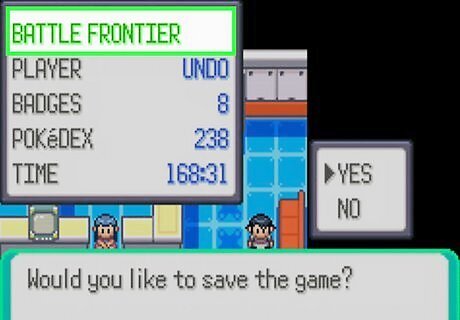
Battle Frontier accessIn Pokémon Emerald, the Battle Tower is redesigned as the Battle Frontier—a special collection of battle facilities that you can visit once you’ve become the Pokémon Champion. In the Battle Frontier specifically, you have the option to earn Battle Points, which you can use to purchase Pokémon attacks, decorations, and more.
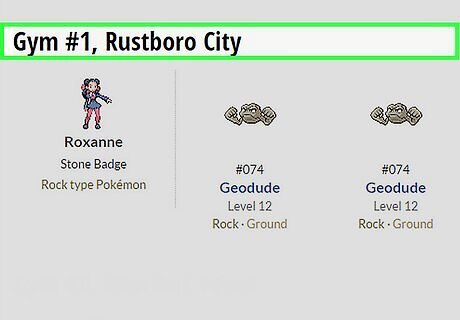
Gym Leader rematchesUnlike Ruby and Sapphire, Pokémon Emerald gives you a chance to fight against Gym Leaders again, even if you’ve already defeated them. These rematches don’t unlock automatically, but they have a chance of being unlocked if you reach certain milestones in the game. For instance, every 60 Pokémon encounters, every 20 Battle Frontier fights, and every 20 trainer battles each give you a 31% shot at unlocking a Gym Leader rematch.

More challenging gameplayMany Pokémon veterans agree that Pokémon Emerald is harder than Ruby and Sapphire, which is important to consider depending on the gameplay you’re in the mood for. The Battle Frontier in particular offers a big challenge to players, and definitely isn’t something to be taken lightly.



















Comments
0 comment